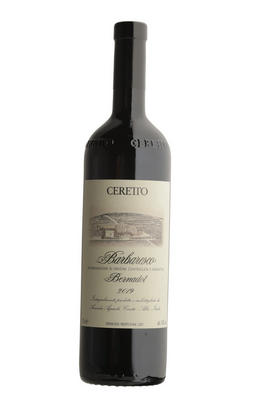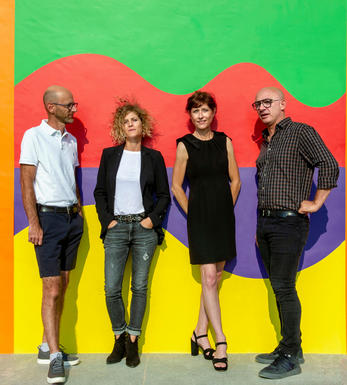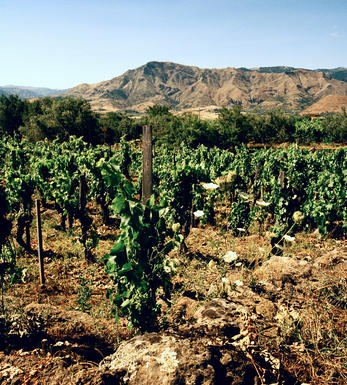
2019 Barbaresco, Bernadot, Ceretto, Piedmont, Italy

Critics reviews
The 2019 Barbaresco Bernardot is dark, fleshy and wonderfully nuanced. Soft contours and silky tannins give the 2019 its racy, super-inviting personality. The Bernardot is usually a potent Barbaresco, but in 2019 it is all finesse, all the way. Rose petal, mint, dried cherry and cinnamon linger in this super-expressive Barbaresco from the Ceretto family.
Tasting the 2019 and 2018 Barbarescos side by side is a great way to gain greater insight into the personalities of these two vintages. The 2019s are deeper and richer in feel, while the 2018s are more forward and also lighter in structure. Not surprisingly, production of the 2018 vineyard-designates was quite a bit lower than normal because of selection. Alessandro Ceretto generally gives the Barbarescos 20-30 days on the skins. Malos are done in barrique, after which the wines spend 18 months in cask.
Drink 2024 - 2039
Antonio Galloni, Vinous.com (February 2022)
The organic Ceretto 2019 Barbaresco Bernadot shows a broader character and a more open-knit personality compared to the Asili. There is a lot of dark fruit, spice, truffle and earth to frame the medium-build of this elegant wine.
These new releases from Ceretto are all great, but the various expressions of 2019 Barbaresco are stunning. I especially recommend those wines.
Drink 2025 - 2045
Monica Larner, Wine Advocate (August 2022)
Treiso. Youthful-looking mid ruby. Rather closed on the nose and pure and concentrated fruit on the palate that is still a little embryonic and with firm but truly ripe, complex tannins. The finish is breathtaking, with perfect balance. Simply gorgeous.
Drink 2024 - 2036
Walter Speller, JancisRobinson.com (June 2022)
Dried herbs, sour cherries, peaches and fresh mushrooms on the nose. Some cedar, too. Succulent and medium-bodied with fine, sleek tannins. Bright and well balanced. From organically grown grapes.
Drink from 2023
James Suckling, JamesSuckling.com (October 2022)
Producing wines in Piedmont since the 1930s, in 2015 Ceretto achieved full organic certification. Bernadot is on the slopes in the upper part of Treiso village. This wine is fermented in stainless steel with indigenous yeasts before going through malolactic conversion in small oak barrels. Aged in 300-litre oak barrels for 12 months, it then spends another 12 months in larger 3,000L oak casks with a final 12 months of ageing in bottle before release.
Stephen Brook: Sweet, intense raspberry fruit on a poised and elegant nose. Stylish, with polished tannins and ample concentration. Good balance with just a trace of oak. This will be delicious.
Michelle Cherutti-Kowal MW: Redcurrants and cherries, some woodsmoke for interest although it could have a bit more weight in the mouth.
Aldo Fiordelli: Sweet violet aroma first, restrained and youthful, smoky woodland. Firm yet ripe with velvety tannins, great lifted acidity and good length with potential for ageing. Allow it to open in the glass.
Drink 2022 - 2039
Stephen Brook, Michelle Cherutti-Kowal MW, Aldo Fiordelli, Decanter.com (August 2022)
About this WINE

Ceretto
This family-run business was founded by Riccardo Ceretto in 1937, principally as a négociant in Alba. He was joined by his sons Bruno and Marcello in the 1960s. Wanting to make and sell their own wines, they began to buy premium land in Barolo and Barbaresco and were among the very first in the region to see the potential of single-vineyard wines. Bruno’s children, Federico and Roberta, and Marcello’s, Alessandro and Lisa, joined in the 1990s. After a period of change and experimentation, a particular style emerged in 2010, utilising shorter skin contact, and a mix of barrique and small botte for a supple but precise expression of Nebbiolo. The family are also involved in various artistic and heritage projects, including the rejuvenation of the famous Piedmontese hazelnuts and two restaurants in Alba: La Piola and the three-star Michelin Piazza Duomo.
In recent years, Ceretto’s winemaking style has been more relaxed, and it is interesting to see how this plays in a vintage like 2019. The 2018 wines were undeniably very successful, with the heady fruit of the year brilliantly captured and expressed. In 2019, that immediacy is more muted, but where Ceretto’s house style does succeed is in working finesse into the tannins. Many producers reported that their 2019s were slow to evolve once in barrel or bottle, and it was only towards the end of their time in wood that the quality of the vintage began to shine. That is not the case here. The purity and linear expression of the vintage has been in place for Ceretto’s wines right from the start. These are more intellectual wines than the 2018s, and their qualities are self-evident.

Barbaresco
The Piedmontese DOCG zone of Barbaresco is responsible for producing some of Italy’s finest wines. It occupies the same region and uses the same grape (Nebbiolo) as its bigger brother Barolo, but is a third of the size (only 640 hectares versus Barolo’s 1,700 hectares). It is also 50 years younger than Barolo, having produced wine labelled Barbaresco since 1890.
Barbaresco earned its DOCG after Barolo in 1980, largely thanks to the efforts of Angelo Gaja. The soils are lighter here than in Barolo – both in colour and weight – and more calcareous. The slopes are also less favourably situated and (relatively speaking) yield earlier-maturing yet extremely elegant wines that require less oak ageing (normally one year in oak plus six months in bottle). The appellation’s key districts are Barbaresco, Treiso, Neive and Alba.
Recommended producers: Cigliuti, Gaja, Marchesi di Gresy

Nebbiolo
Nebbiolo is the grape behind the Barolo and Barbaresco wines and is hardly ever seen outside the confines of Piedmont. It takes its name from "nebbia" which is Italian for fog, a frequent phenomenon in the region.
A notoriously pernickety grape, it requires sheltered south-facing sites and performs best on the well-drained calcareous marls to the north and south of Alba in the DOCG zones of Barbaresco and Barolo.
Langhe Nebbiolo is effectively the ‘second wine’ of Piedmont’s great Barolo & Barbarescos. This DOC is the only way Langhe producers can declassify their Barolo or Barbaresco fruit or wines to make an early-drinking style. Unlike Nebbiolo d’Alba, Langhe Nebbiolo can be cut with 15% other red indigenous varieties, such as Barbera or Dolcetto.
Nebbiolo flowers early and ripens late, so a long hang time, producing high levels of sugar, acidity and tannins; the challenge being to harvest the fruit with these three elements ripe and in balance. The best Barolos and Barbarescos are perfumed with aromas of tar, rose, mint, chocolate, liquorice and truffles. They age brilliantly and the very best need ten years to show at their best.


Buying options
Add to wishlist
Description
This is one of the best vineyards of the Treiso commune and Ceretto is the only producer to offer it as a single vineyard. There is an earthy, savoury edge to the wine – slightly balsamic – with plenty of rugged tannins that are typical of Treiso. A rounded and assertively positive wine.
Drink 2024 - 2035
Berry Bros. & Rudd
wine at a glance
Delivery and quality guarantee